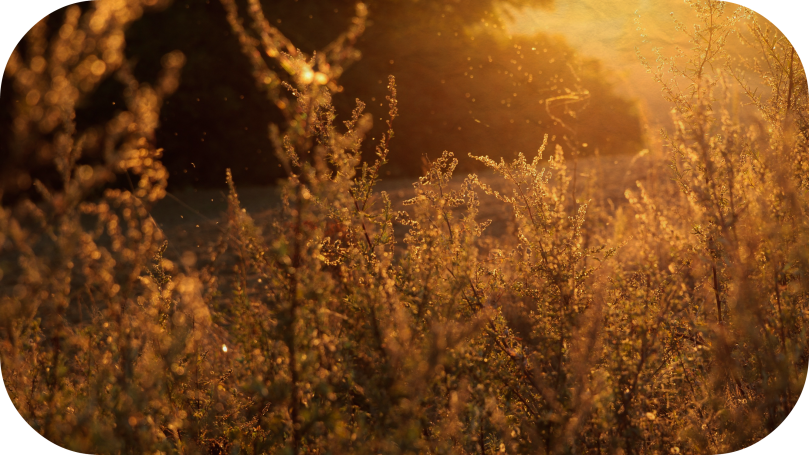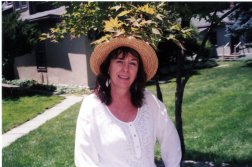
I.
May 2, 2013
Dear Bees,
I feel I must apologize. I’m new to this apian life, and I regret not thinking of you first when Achilles came to Iowa. The cold air settled on my exposed back this morning, and I awoke from the chill. Snow shrouded the world outside my window, colonizing the tree branches like arctic lichen. Today, the snow didn’t fall simply down. It fell east and west, north and south. It blew up, buoyed by the wind.
Yesterday they warned us this storm was coming. They, who attempt to prophesy these kinds of events. They, who termed this record-breaking storm Achilles. I wonder how deeply they who selected the name understood its history. I wonder if they knew the word’s etymological origin—akhos laos, “the grief of the people.” I wonder if the name made them think of Homer or Brad Pitt. And I wonder if there is a slain hero Hector out there whose wimpy brother Paris will summon all of Apollo’s courage to save us from this storm with his arrow.
I would have been more concerned with you, dearest bees, if I had believed the forecasters, but I was in denial. Impatient. Just two days ago, I pulled the canvas bag out from under my bed, the bag with swimsuits and sandals and other articles of clothing that reveal more skin than they cover, packed with a strip of cedar to keep everything fresh. Two days ago, I donned a tank top and shorts. I bared my pale skin to the bright sun, and I sweat in the eighty-degree afternoon.
I was embarrassed about showing so much skin after having spent so long covering it up, and I have more skin now than I did the last time I wore these clothes. I have more skin than I’ve ever had before—more breasts, more stomach, more hips, more ass, more thigh. I have what I’ve always been teased for not having: meat on my bones. My boyfriend—as much as I hate the juvenile sound of the word, that’s what he is—doesn’t mind the extra flesh. I know I probably shouldn’t mind it either, but I do. I’d had the same body for a decade, and I no longer recognize the vessel that contains me. But I was done covering it up and content to pick up more sun and more fresh warm air on account of my increased surface area.
This morning, however, my body only picked up cold, pushing against me on all sides as Achilles bore down on Ames, Iowa. Sleeping next to the window was lovely in the summer when my boyfriend—just a roommate back then—and I moved in and arranged the furniture. I would wake up to sunshine and, when I left the window open for the night, birdsong and bursts of fragrant foliage. I woke up to the signs of life. It was like a Disney movie or a transcendentalist celebration of the world’s glory. But through the long winter, it has felt like sleeping in front of a walk-in freezer with the door ajar because of a faulty latch.
The air coming off the window tells me how much clothing I will need before I’m ready to face the world. This morning, the cool air told me to wear all of the clothes—or at least all of the warm ones I haven’t grown out of. (It’s a funny thing, “growing out of ” clothes at twenty-eight years old instead of just wearing them out like usual.) The bag of bikinis and skimpy shorts that probably won’t fit anyway will have to go back under the bed for now.
From the window, the snow looks soft and quiet just as all snow appears from afar. It tumbles off the branches more quickly than usual, though, falling fast like fat white tears. Once I ventured outside, I found the snow neither soft nor quiet. The temperature hovers just above freezing, so the snow does not drift as gentle flakes but rather drops as airborne slush, pockmarking the white carpet upon impact. The fat white tears cannonball into puddles on the street. They collided with my head like well-guided slush missiles. Moisture beaded on my glasses; my vision blurred.
And at that moment, I finally thought of you, dearest honeybees. It hasn’t been a week since we in the recently-formed Bluff Creek Bee Club released you into your new hives at the Casey Land. If we had anticipated the arrival of Achilles, we might have waited for calmer skies. But by the time the storm was foretold, it was too late. If your colonies were already well established I wouldn’t be so concerned about the weather. If you survive this storm and the summer that must eventually follow it, you will winter out-of-doors at the Casey Land. By then, hopefully, you will be strong. A superorganism adapted for life on all continents save Antarctica, your species has survived cruel weather before. But right now, your queens are fresh out of the cage. You are all just starting to get to know one another and your roles in and outside of the hive. And I worry.
I want to save you from Achilles, but leaving you alone is the only way I can help right now. I hope you huddle close in your hives the next few days, ranks closed around your respective queens, shivering to raise your body temperatures. I know you can keep warm as long as you have food. I hope you conserved your sugar-water wisely, stretching the reserve until Achilles has gone and the air is safe for us to open your hives again for a top off.
Since you’re probably (hopefully) tucked away in your hives, you likely haven’t had a look at the world outside. It’s strangely beautiful. I hadn’t realized how green and vibrant the grass had become until it was silhouetted against bright white slush. As courageous and ambitious as any Trojan, the grass fights back against the spring snowstorm, radiating the energy of life and thawing the dimpled snow before it even stops falling. Put another way, it looks as if all of Ames has been TP-ed by some angsty teenagers just before a downpour, the soggy tissue torn through by raindrops to reveal glimpses of the verdant landscape beneath. Somewhere, a bird sings. Though I can’t identify the species, I think I know the words to its song.
I promise to write again soon.
Yours truly,
Stef
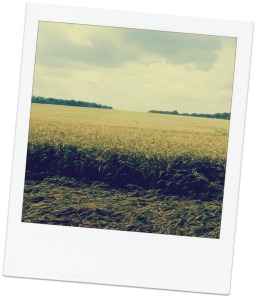
III.
May 4, 2013
Dear Tallgrass Prairie,
The snow melts in the spring sun, dissolving into dewy grass. Good news for bees.
The bees’ home at the Everett Casey Nature Center and Reserve is seventy-six acres straddling Bluff Creek. Five years ago, 1946 Iowa State Engineering alum Everett Casey gifted the land, valued at $201,000, to the English Department for use by the Master of Fine Arts program in Creative Writing and Environment. Why he did this, I’ll never know for sure. Casey cited an excellent writing class that he took at ISU for an explanation. A single class. I like to think that it was for me and others like me in the MFA program. Casey was from Detroit—not too far away from my own birthplace and childhood homes in West Michigan. I like to think that Mr. Casey knew about my type. That we would need a piece of wildness to be able to make Iowa home. I know it sounds selfish, but I like to think he reserved this place for me and others like me so that we never forget the privilege we have to live on this land.
As you know, the property should be carpeted with tall prairie grass—as should the majority of Iowa. Forty percent of the United States was once covered in you, my dear Tallgrass Prairie, but Iowa led the rest of the union with the largest percentage of its land area devoted to the native grasses. A sea of grass that can be just as disorientingly awe-inspiring as the open ocean or, something I’m more familiar with, a Great Lake. Your beauty has always been subtler than that of other landscapes. You hid much of your treasure underground, in your amazing, complex root system that held the wet, rich soils in place.
Now Iowa leads the race to the bottom—with more than 99.9% of its natural landscape gone, replaced by a system governed by drainage tiles and an excessive amount of chemicals. Thirty million acres of big and little bluestem, Indiangrass, and switchgrass—all plowed under to make room for cornfields. The hardy stalks grow taller than men. Their ears boast hundreds of kernels arranged in tidy rows like widgets on a factory line, packaged efficiently in a husk and swaddled in long blonde silk for safer shipping and handling. Eight thousand years of prairie legacy disappeared, so Americans can get fat on soft drinks and corn-fed cattle.
I prefer to get fat on honey.
I miss you.
Love,
Stef
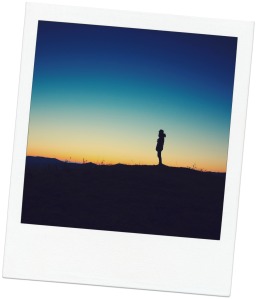
V.
May 10, 2013
Dear Casey Land,
At last, the skies are calm enough to expose the hives to the elements. Emerging apiarists pile into a van and set out to visit you. We must check on our bees—make sure the queens are still alive and the workers are building comb for brood. We must replenish the sugar-water. Soon the bees will feed themselves.
We burn scraps of burlap in the smoker, pumping the bellows to fuel the fire. Standing to the side of the first hive, we puff smoke into the openings. The smoke calms the bees, so they won’t attack us. We lift the outer cover, give them more smoke, and then remove the inner cover to reveal the built-up frames. Right now, the hives are short—with only the lower deep in place. The lower deep is the brood chamber, where the queen lays her eggs. Soon we will add the upper deep—the food chamber—and a few weeks after that, a queen excluder and a shallow honey super. We don’t expect to harvest much honey this year, but we’re optimistic that we’ll each get to taste the sweet products of the humming hives. For now, however, we just hope our colonies survive. Between Varroa mites, the mysterious Colony Collapse Disorder, and now the bizarre weather, our bees face much adversity.
We pull out frames for inspection and find our girls have been busy despite the chill. They built extra comb between the frames, too much comb in places, and a large piece of the hexagonal wax breaks off and falls into the hive. A brave beekeeper sticks her gloveless hand into the depths of the chamber and pulls out the fallen chunk, covered on all sides with bees. There’s no way to glue the brood comb back together, so we gently brush the bees off and back into the hive. We save the piece as a souvenir. Later, on the drive back to Ames, we’ll notice the tiny rice-like eggs the queen has laid in each cell. Since we will be too inexperienced at this point to recognize the queen among the crowd of workers and drones, the presence of eggs serve as our proof that Her Highness is alive and performing her royal duties.
We shift some frames around, moving the heavily built-up frames toward the outside and moving the barer frames toward the middle, the heart of the hive where the queen lays her eggs—as many as two thousand per day. We refill the sugar-water, close up the hive, and proceed to complete the same tasks with the second hive.
The business of our visit taken care of, we decide to enter your lovely forest to look for blooming wildflowers. Evidence of the early prairie restoration efforts is apparent—most of the invasive species we lopped off in the fall have failed to sprout back. We all wish it could have been accomplished without the aid of Roundup, but unfortunately it’s our only effective weapon against the intruders. If we want you to look natural again, we will have to take some unnatural measures. That’s what I’m told anyway, and though it feels wrong in my gut, I listen to those with experience because I know they hate how toxic our environment is too.
We hike down the steep hill, the trail newly widened, through invading cedars and into the oak forest, past the agricultural field recently converted from corn rows to oats in preparation for alfalfa planting—your only source of income and now on its way toward becoming a much better source of nutrition for the bees—until we reach Bluff Creek. The fast water fills the channel more completely than we’ve ever seen. Our feeble rock bridges have been submerged by the snowmelt, creating exciting riffles.
No longer a stagnant, desiccated remnant, the creek rushes nobly. We straighten our spines, pull back our shoulders, and beam like proud parents. We made this, we think, but like proud parents, we’re wrong.
As you well know, Bluff is a meandering sort of creek, and we follow its winding way downstream to the sandy point bar that demarcates the edge of the property. Though our English Department holds your deed, we stewards don’t like to think of owning you. You aren’t our property. You’ve been home to all varieties of native and invasive flora and fauna, and now that includes a pair of honeybee colonies, but please don’t get the wrong idea. This kind of colonialism is rather different than the kind you might be apprehensive about.
On our way back to the van, we lose ourselves in your woods. We unknowingly follow what is most likely a deer path forking off our main trail. Hopping the barbed wire fence could be our first clue that we are losing track of where you end and the neighboring land begins. An arbitrary line, yes, but still legally significant.
We emerge from the woods on the edge of a freshly planted field and follow it toward the road hoping to see our hives just around the bend. We don’t.
So we reenter the woods, no longer on any path at all, blazing our own trail that includes crawling under and climbing over fallen trees. We shinny down a gully, hop the muddy bottom, and scramble up the other side. We scale another barbed wire fence—a promising sign—and emerge from the woods again. This time, we see the white hives and know that we are home.
On the van ride back to Ames, we find ticks all over our bodies. Another souvenir. Thanks for that.
Respectfully,
Stefanie Brook Trout
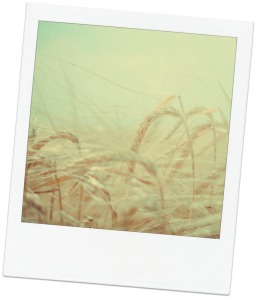
IX.
May 31, 2013
Dear Bees,
This morning we—my boyfriend, Lily, and I—are finally running. For me, it’s the first time in seven years. Seven years ago, I ran the Detroit Marathon on a relay team to raise money for a summer camp for kids with heart problems. My leg was only six miles, a lazy day for a marathon runner, but it was longer than I’d ever run before, and I found out later that it could have killed me.
I ran for my nephew Dominick, who was too young to attend summer camp yet but had needed two heart surgeries in his first year. I knew I had a congenital heart problem too, but I hadn’t known how serious it was when I had agreed to run the relay. I found out four years later, when Dr. Sheik diagnosed me with an atrial septal defect, a hole in my heart two centimeters in diameter that allowed the blood from my left and right atria to slosh back and forth at will, sullying up the whole system of veins and arteries and valves and vena cavae that work diligently to keep oxygenated and deoxygenated blood from mixing.
Dr. Sheik plugged the hole in my heart without taking a scalpel to my chest and, after a few months, cleared me for strenuous physical activity. But I was terrified to ever run again. I’ve gained twenty-five pounds since the surgery. I blamed it on my new birth control, my busyness with graduate school, my laziness. Now, running through Ames with my boyfriend beside me, Lily leading and wishing I could go faster, I feel my heart rate quicken and the subsequent anxiety, and I know that it was fear that kept me inert. I had a new heart, and I was afraid to stress it too hard. I didn’t want to go through all of that again.
Running, I feel my heart beating, thrumming its chord of life through my body, awakening my senses. My heart might have been faulty at first, but my skeleton is built for running. All that I am rests on two long legs. As a teenager I once wore hot pink skinny jeans to the zoo, and my sister, who lives in California and hasn’t seen me in the past year, still calls me a flamingo. My thighs never used to touch, but they’re rubbing now, which is inconvenient but really not a big deal. The fresh air fills my lungs with a forgotten power. The extra flesh is cold, but I am warm.
I will come for a visit tomorrow.
Faithfully yours,
Stef
—
This excerpt appears with permission of the author. “Letter After Achilles” appears in its entirety in the anthology Prairie Gold: An Anthology of the American Heartland (Ice Cube Press 2014). Purchase a copy here.
Images via: Unsplash and Beekeeping Wikia
Stef anie Brook Trout explores the dynamic interactions between people and their surroundings through all genres of writing. A candidate in Iowa State University’s interdisciplinary Master of Fine Arts program in Creative Writing and Environment, Stefanie is the communications assistant for the Leopold for Sustainable Agriculture, the MFA student coordinator for the Everett Casey Nature Center and Reserve, and a member of both AgArts and the Bluff Creek Bee Club. She co-edited Prairie Gold: An Anthology of the American Heartland, which was published by Ice Cube Press in July 2014. More at http://stefaniebrooktrout.com
anie Brook Trout explores the dynamic interactions between people and their surroundings through all genres of writing. A candidate in Iowa State University’s interdisciplinary Master of Fine Arts program in Creative Writing and Environment, Stefanie is the communications assistant for the Leopold for Sustainable Agriculture, the MFA student coordinator for the Everett Casey Nature Center and Reserve, and a member of both AgArts and the Bluff Creek Bee Club. She co-edited Prairie Gold: An Anthology of the American Heartland, which was published by Ice Cube Press in July 2014. More at http://stefaniebrooktrout.com
Stefanie writes: “I wrote “Letters after Achilles” during and in the immediate aftermath of a snowstorm that hit Iowa May 2, 2013–less than two weeks after the Bluff Creek Bee Club had established our first honeybee hives. Our colonies survived that storm. Unfortunately, they did not survive this past winter–Iowa’s coldest in 35 years–so we [started] all over this spring. “
 From top left: editors Melissa Reeser Poulin & Jill McKenna Reed, contributor Lois Leveen; 2nd Row: contributor Adrienne Flagg, the Corvallis audience, OSU Honey Bee Lab research assistant Ashrafun Nessa; 3rd row: contributor Kristin Berger, contributor Sarah Marshall, and contributor and event host Charles Goodrich, director of the Spring Creek Project at OSU.
From top left: editors Melissa Reeser Poulin & Jill McKenna Reed, contributor Lois Leveen; 2nd Row: contributor Adrienne Flagg, the Corvallis audience, OSU Honey Bee Lab research assistant Ashrafun Nessa; 3rd row: contributor Kristin Berger, contributor Sarah Marshall, and contributor and event host Charles Goodrich, director of the Spring Creek Project at OSU. 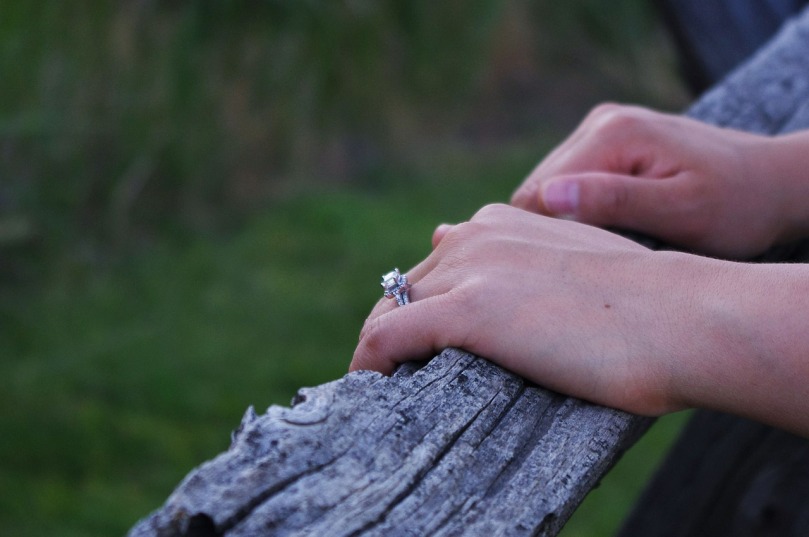





 anie Brook Trout explores the dynamic interactions between people and their surroundings through all genres of writing. A candidate in Iowa State University’s interdisciplinary Master of Fine Arts program in Creative Writing and Environment, Stefanie is the communications assistant for the Leopold for Sustainable Agriculture, the MFA student coordinator for the Everett Casey Nature Center and Reserve, and a member of both AgArts and the Bluff Creek Bee Club. She co-edited Prairie Gold: An Anthology of the American Heartland, which was published by Ice Cube Press in July 2014. More at
anie Brook Trout explores the dynamic interactions between people and their surroundings through all genres of writing. A candidate in Iowa State University’s interdisciplinary Master of Fine Arts program in Creative Writing and Environment, Stefanie is the communications assistant for the Leopold for Sustainable Agriculture, the MFA student coordinator for the Everett Casey Nature Center and Reserve, and a member of both AgArts and the Bluff Creek Bee Club. She co-edited Prairie Gold: An Anthology of the American Heartland, which was published by Ice Cube Press in July 2014. More at 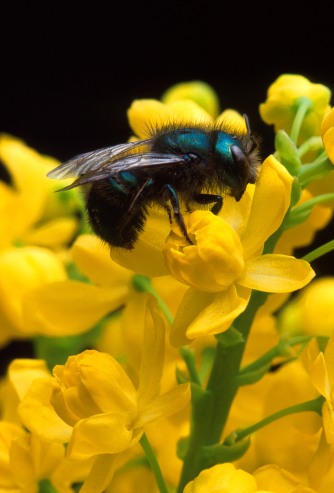
 Gregg Kleiner‘s novel Where River Turns to Sky (HarperCollins, 1999) was a finalist for the Oregon Book Award and the Paterson Fiction Prize.
Gregg Kleiner‘s novel Where River Turns to Sky (HarperCollins, 1999) was a finalist for the Oregon Book Award and the Paterson Fiction Prize.